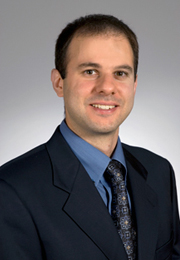Dr. Wassim Ghannoum, civil engineering assistant professor at The University of Texas at Austin, arrived in Haiti Jan. 21 to begin a week-long safety assessment of structures in the disaster-ridden area.
Focusing chiefly on hospitals and ports, he is part of the team of 10 architects and engineers from U.S. educational institutions and private engineering firms seeking to identify structures that remain safe to enter.

Ghannoum was selected from 150 French-speaking engineers volunteering for the assignment with the Appropriate Infrastructure Development Group (AIDG), a national organization that helps provide developing countries with affordable renewable energy, sanitation and clean water.
The humanitarian mission will provide recommendations for tagging buildings as either safe or unsafe, according to the tagging methodology developed by the U.S.-based Applied Technical Council. Another sponsoring group, the Multidisciplinary Center for Earthquake Engineering Research, has translated into French the signage that team members will use in Haiti to describe whether or not a building is safe to enter.
When earthquakes occur in the United States, these inspections are typically performed by government agencies, such as the U.S. Army Corps of Engineers.
“In Haiti the damage the country has sustained to its infrastructure and to its population is so extensive that it is largely up to the international community to conduct these inspections,” says team leader Andre Filiatrault, director of the Multidisciplinary Center for Earthquake Engineering Research. “"Once we have assessed the safety of the most critical structures, then those facilities that are deemed safe can be fully utilized for relief efforts, in particular hospitals, food storage and distribution centers and ports."
"Our purpose is to provide the country with our expertise as efficiently as we can so that Haiti's recovery effort can proceed as rapidly as possible."







